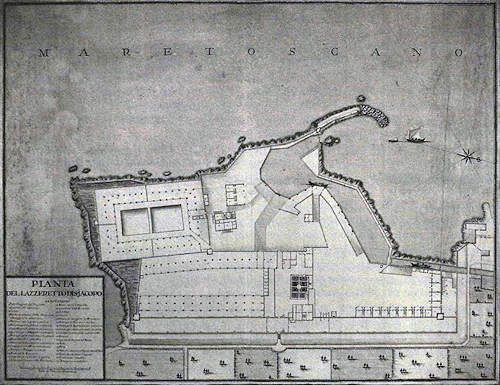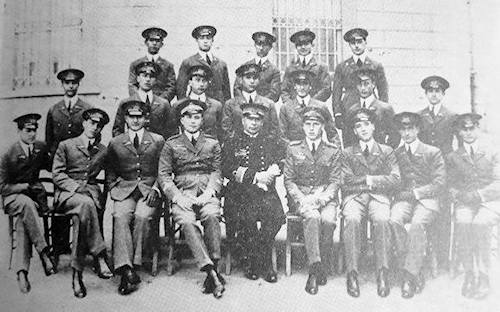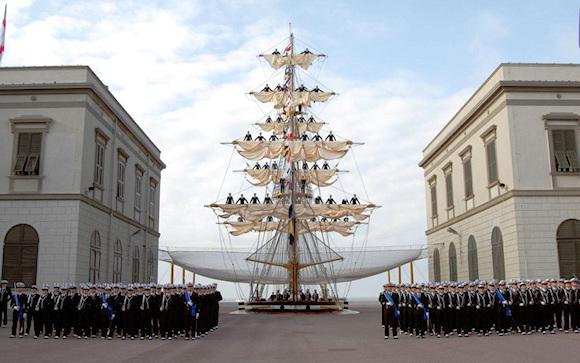There is a magical place, where tradition and innovation have followed one another for over a century: the Naval Academy of Livorno. In that Institute that overlooks the sea, from November 6, 1881, the date of its inauguration, the officers are trained, first of the Royal Navy and now of the Italian Navy.
Its history, like many of its traditions that have survived intact to the present day, was written not only by the men who wrote valuable pages of our naval history but also by the many men and today women who silently, as in the style of the Armed Forces, they operate at sea and from the sea for our country. This is perhaps the magic of this austere and elite university institute, where the students and officers who attend internal courses have always been subjected to intense rhythms where study, sport and military training are combined with the aim of creating capable officers. capable of representing our country with honor on sea and on land.
Of course it's not a choice for everyone; it takes a lot of will and above all motivation to keep that flame burning within those ancient walls alive throughout your career. Both land and sea winds blow violently and many get lost along the way. For this reason, we can say historically, the Academy has always preferred to carefully select its personnel in awareness of the trials that his children would have to endure on sea and land in their lives.
A long story
 The Navy of the Kingdom of Italy, through the work of the minister Camillo Benso, Count of Cavour, began to organize itself before 17 March 1861, the date on which King Vittorio Emanuele assumed the title of King of Italy.
The Navy of the Kingdom of Italy, through the work of the minister Camillo Benso, Count of Cavour, began to organize itself before 17 March 1861, the date on which King Vittorio Emanuele assumed the title of King of Italy.
In January 1861 Cavour created the Ministry of the Navy separating it from that Of the war. Although he was president of the council, he was the first minister of the Navy, aware of the importance of creating an important naval instrument for the prestige of the new Kingdom.
The greatest challenge was to integrate totally different realities: the small Sardinian Navy reinforced by the Bourbon, Sicilian and Tuscan shipping, a heterogeneous fleet of propeller-driven and sailing ships. The unification of the officers was not easy. Many Neapolitan Navy officers refused to join the new Navy, although they were allowed to retain their rank and seniority. An even more complex problem was the integration of the officers of the dictatorial Sicilian Navy, mostly irregulars who had enlisted in Garibaldi's army and included former officers of the Sardinian Navy but also Bourbons and Austro-Hungarians who had been expelled from Venice after the uprisings of 1848.
Following the unification of Italy, the naval school was founded on the initiative of the then Minister of the Navy, the inspector general of the naval engineering Benedetto Brin who brought together in this institution the two previous schools, the "Royal naval school" of the Kingdom of Sardinia", which was based in Genoa, and "the Royal Academy of the Bourbon Navy", of Naples. Two professionally different worlds, with different approaches in a newly born Italy in which three navies actually coexisted, the Sardinian, the Bourbon and the Sicilian.
After analyzing many hypotheses, including the Lazzaretto del Varignano, it was Count Camillo Benso di Cavour who proposed that it be born in Livorno, partly because it was in a central position compared to the previous ones, but also because it was easily reachable.
 The area where the school was built hosted the Lazzeretto di San Jacopo since 1640, a real citadel on the sea, surrounded by a moat and a high wall which could only be accessed by a drawbridge which ensured the necessary isolation for the quarantine of the crews of ships.
The area where the school was built hosted the Lazzeretto di San Jacopo since 1640, a real citadel on the sea, surrounded by a moat and a high wall which could only be accessed by a drawbridge which ensured the necessary isolation for the quarantine of the crews of ships.
On the large monumental entrance portal, above the arch, we can still read the marble plaque commemorating the usefulness of the public work for health and navigation: “Petrus Leopuldus Arch. Austr. Hung. Bohemian. RP Magnus Etrur. Dux navigationis et salutis publicae vindex hominibus mercibusque graviore pestilentiae suspicione notatis tutius expurgandis remotiorem hanc insulam et porticus designavit construxit ann. MDCCLXXIII“.
An uphill start
The union of the two schools in a single location, in order to train future officers of the Kingdom, was not easy. Among the various aspects taken into consideration there was also that of the language; Italian was spoken in Tuscany, assumed as the official language in a Kingdom still divided by dialects and the choice of Livorno provided a guarantee for a correct and common education for students. One of the first to frequent it, in addition to numerous Savoys, was Manlio Garibaldi, the last son of Giuseppe Garibaldi, who purchased a villa in the Ardenza area. The design of the building complex was entrusted to the captain of the military genius Luigi Pestalozza and the works began in 1878 under the guidance of the Livorno engineer Angiolo Badaloni.
In 1913, the adjacent area occupied by the pre-existing San Leopoldo hospital was also annexed to the Naval Academy complex, where the teaching facilities are now located.
The Naval Academy received the Institute flag in 1906 from King Vittorio Emanuele III who handed it over to the commander of the Institute, a position held by the then captain Thaon di Revel, who would be the architect of the victory at sea during the subsequent First World War.
 Not everyone knows that the buildings of the Naval Academy of Livorno also hosted the students of what would become the Air Force Academy (photo) from 1923 until 1926. The Regia Aeronautica, established as an autonomous armed force, used this temporary arrangement for its officer cadets waiting to set up their own academy.
Not everyone knows that the buildings of the Naval Academy of Livorno also hosted the students of what would become the Air Force Academy (photo) from 1923 until 1926. The Regia Aeronautica, established as an autonomous armed force, used this temporary arrangement for its officer cadets waiting to set up their own academy.
During the Second World War, due to the bombings which hit Livorno between 1943 and 44, the Academy was forced to move to Venice and, subsequently, after just two months, to Brindisi, to the facilities of the Naval College “Niccolò Tommaseo” of the GIL, where he remained until 5 June 1946, the date on which the Institute finally returned to Livorno.
The structures that housed the Academy had suffered heavy damage due to the bombings and it was necessary to undertake, in the immediate post-war period, a substantial reconstruction and strengthening of the infrastructure which lasted twenty years and which saw, in 1966, the delivery of the modern “Palazzo Studi“, current headquarters of the laboratories and specialized teaching classrooms.
Photo: Navy / web
(article originally published on https://www.ocean4future.org)












